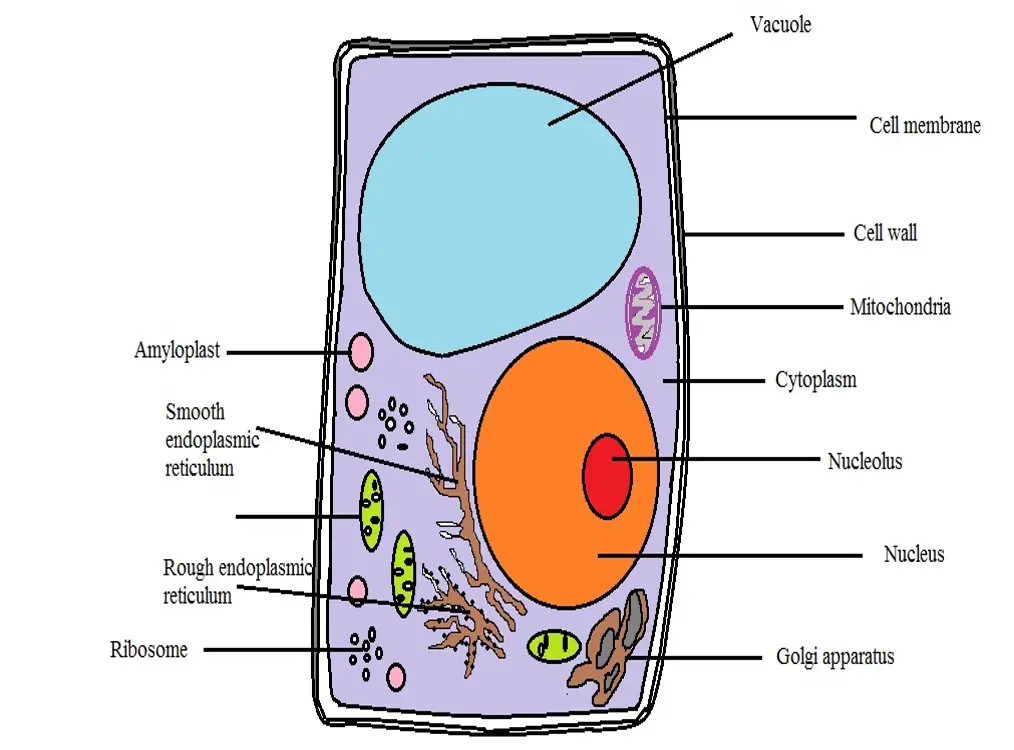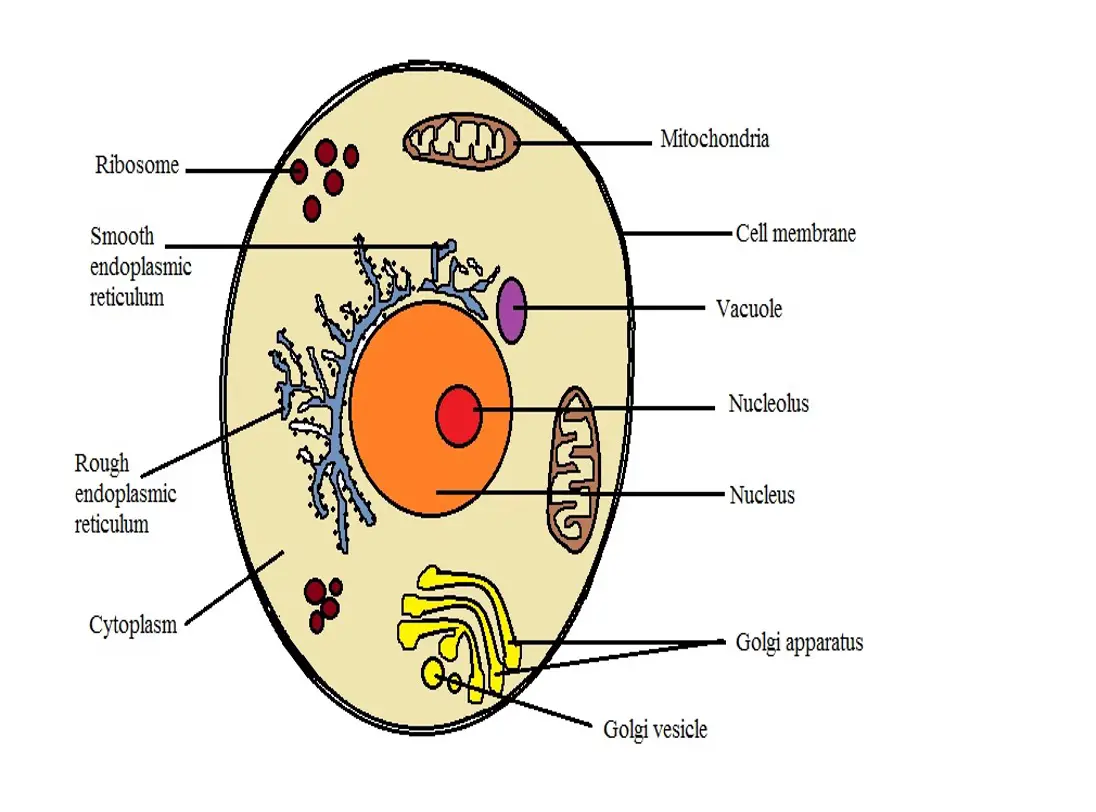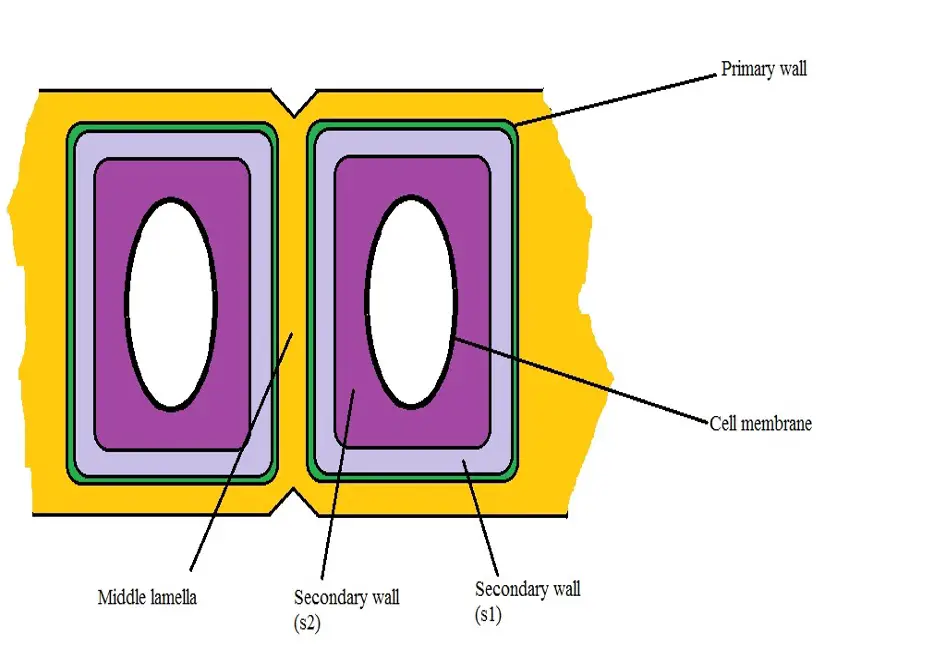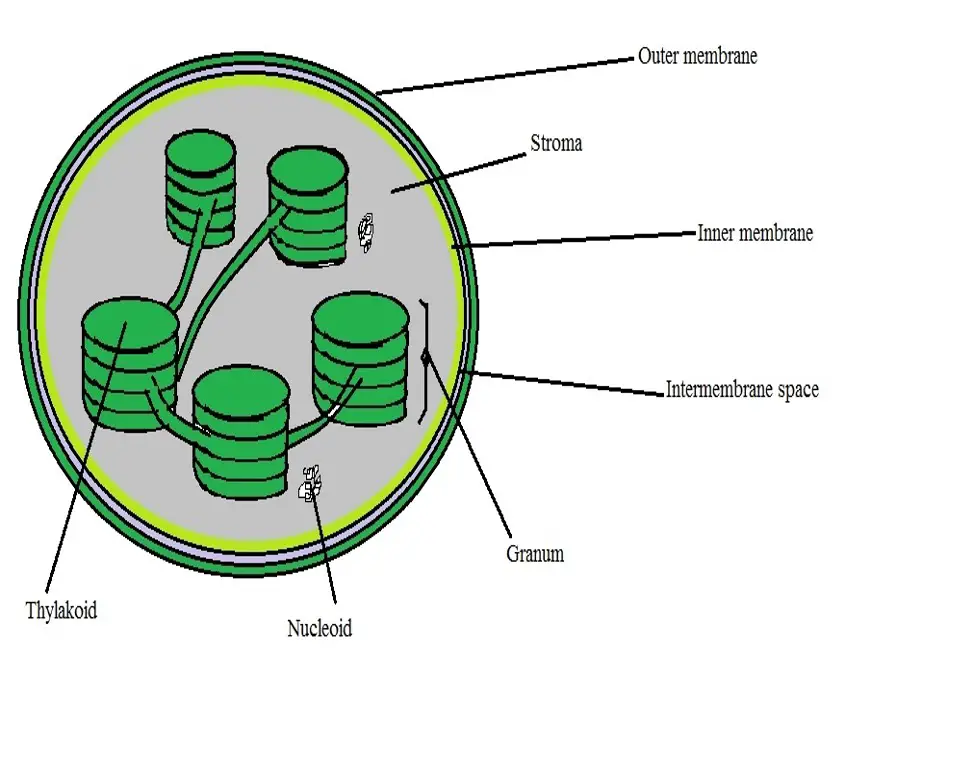What are the Differences between a Plant Cell and an Animal Cell?
Discovered in 1665 by Robert Hooke, an English scientist, and architect, a cell may be described as the functional basic unit of life. As such, it's the smallest unit of life described as a living thing.
Given that the majority of plants and animals are multicellular organisms, they contain different types of cells (e.g. red blood cells and nerve cells in mammals) that are responsible for different functions. Regardless, they share similar structural characteristics that allow them to perform their respective functions.
Plant and animal cells have several differences that will be discussed in detail in the sections below.
* The word "cell" is derived from the Latin word "celle" which means a small room.
Differences between Plant and Animal Cells
Morphology (Cell Membrane and Cell Wall)
One of the most obvious differences between plant and animal cells is with regard to their general morphology. As compared to plants, which generally have a more definite shape with edges (it may appear rectangular, cubic, etc), animal cells can take different shapes ranging from ovoid or spherical (e.g. red blood cells) to dendritic (tree-like shape as is the case with nerve cells).
Here, the difference in shape is largely due to the fact that plants have a cell wall that is absent in animal cells.
Cell Wall in Plant Cells
Like plant cells, animal cells have a cell membrane. This is an important barrier that separates the interior parts of the cell from the external environment while also regulating the movement of molecules/substances in and out of the cell.
In both plants and animals, the cell membrane is a mosaic that consists of phospholipids, proteins, and cholesterol among other components that move fluidly within the membrane.
Due to the nature of the phospholipids among other components, the cell membrane is flexible and thus capable of taking different shapes (this is the reason some cells can squeeze and pass through narrow gaps).
The shape is also dependent on the functions and type of cells. For instance, because nerve cells have to pass signals to send information to and from the central nervous system, they tend to be elongated and branched.
Plant cells, on the other hand, have a cell wall in addition to the cell membrane. Here, the cell wall is exterior to the cell membrane (the cell membrane lies beneath the cell wall) and thus surrounds the entire cell including the membrane.
Despite being relatively thin, the cell wall is mechanically strong as compared to the cell membrane. It consists of polysaccharides among other polymers that are produced by the cells.
Following cell division, phragmoplast, a temporary scaffold consisting of protein fibers are formed at the junction of the neighboring daughter cells. This is then followed by the deposition of cell wall building materials which are gradually assembled to build the cell wall.
Primary and Secondary Cell Wall
Here, it's worth noting that there are two types of cell walls in plants.
These include:
Primary Cell Wall
Found in higher plants, the primary cell wall consists of cellulose (a polysaccharide), hemicellulose, and pectin. In addition, this wall has been shown to contain a number of other important structural components including glycoproteins, minerals, and phenolic esters.
Here, studies have shown these components to be linked through covalent and non-covalent bonds. At one point pectin and glycoprotein among other components were suggested to be linked to each other through covalent bonds.
Aswell, cellulose microfibrils are joined to xyloglucan through non-covalent links to form a network that reinforces the tensile strength of the wall. Today, however, many researchers believe that these components are joined through hydrogen bonds and cross-linking.
Functions
As mentioned, the primary wall is commonly found in higher plants. Here, changes in the modification of polysaccharides located in the cell wall and middle lamella have been associated with fruit ripening.
Ripening has been attributed to the degradation of polysaccharides which affects polymer bonding as well as increased separation between cells.
This, in addition to alterations of the turgor pressure, causes the fruits to soften over time. Apart from fruit and vegetable ripening, the primary cell wall also provides structural and mechanical support while also contributing to the general shape of the cell.
Some of the other functions of this wall include:
- Resisting turgor pressure
- Regulating movement of molecules/material
- Store carbohydrates
- Protecting the cell against environmental stressors
Secondary Wall
Unlike the primary wall, the secondary cell wall starts forming when a cell stops growing. As such, it does not expand to allow for further cell growth. Once the cell stops growing (increasing in size) various components of the secondary cell wall are gradually deposited.
Whereas plasma membrane cellulose synthases are involved in the production of cellulose, the Golgi produces hemicellulose that is also deposited. In such cells as those of the xylem fibers and tracheids, the deposition of lignin serves to strengthen the wall. Neighboring cells have been shown to contribute to the lignification process.
Functions
Located between the primary wall and the cell membrane, the secondary wall is thicker and stronger compared to the primary cell wall. Depending on the part of the plant, a cell may consist of several layers of the cell wall.
While it also provides structural support for the cell, this wall has been shown to play an important role in protecting plants from pathogens. As mentioned, this wall is thicker compared to the primary wall. It acts as a barrier through which pathogens have to pass if they are to colonize the plant tissue.
Being thicker than the primary wall, the secondary wall also contains most of the cellulose and thus the majority of carbohydrates with regards to biomass. For this reason, it's not only a component of wood but also nutrition for various organisms.
* The middle lamella acts as the cement between the cell wall of neighboring cells.
* The secondary cell wall is only found in some cells while the primary cell wall is found covering the majority of cells.
Vacuole
One of the other differences between plant and animal cells is with regards to the vacuole. While both cells have vacuoles, those of plant cells are large in size and can take up to 90 percent of the total cell volume.
Like some of the other organelles found in eukaryotic cells, vacuoles have a membrane known as the tonoplast. Like the cell membrane, this membrane plays an important role in regulating the movement of materials in and out of the organelle.
* The size of the vacuole will vary depending on the function.
Under normal conditions, water will flow into the vacuole causing it to swell. As a result, turgor pressure increases pushing the cell membrane of the cell against the cell wall. This is important in that the process causes the cell wall of plant cells to become rigid and support the plant.
When the vacuole losses water (and the plant does not absorb water), turgor pressure is lost, the vacuole pulls the cytoplasm and thus the cell membrane away from the cell wall, causing the plant to start wilting and eventually die.
* Without turgor pressure, plant stalks would be unable to stretch upwards towards the light. In the process, they would fail to obtain the energy required for photosynthesis.
Apart from water, vacuoles also act as storage organelles in plants. As such, they may also contain a number of metabolites including sugars, lipids, and proteins. In addition, they store salts, ions, enzymes, and toxins.
These substances also play an important role in the movement of water in and out of the vacuole. When there is a higher concentration of ions in the vacuole, water moves into the vacuole via the tonoplast through a process known as osmosis.
As compared to plant cells, animal cells have more than one small vacuole (however, not all animal cells have a vacuole). Having small or no vacuole for these cells is particularly beneficial given that they do not have a cell wall that would withstand the high turgor pressure associated with larger vacuoles found in plant cells.
Having a large central vacuole without a cell wall would cause the cell to burst/rupture because of the pressure exerted on the cell membrane.
Functions
Unlike plant cell vacuoles which contribute to the turgor pressure associated with plant cells as well as storage or various material, vacuoles found in animal cells are mostly involved in the transportation of material in and out of the cell. This is achieved through two main processes known as exocytosis and endocytosis.
In the case of exocytosis, vacuoles fill up with various materials including waste products or molecules to be transported to neighboring cells or the extracellular matrix.
The vacuole then moves towards the cell membrane where the contents are released through an opening in the cell membrane. This is an active type of transport and thus requires energy.
See information on Passive Diffusion Vs Active Transport
Endocytosis, on the other hand, is the process through which the vacuole brings in given material/matter into the cell. Here, the signals in the extracellular matrix influence the formation of vacuoles that move towards the cell membrane to receive the material.
This process involves the invagination of the cell membrane so that the materials are enclosed in the vacuole and taken into the cell.Ssome cells of the immune system use this to remove pathogens from the extracellular matrix etc so that they can be destroyed.
Photosynthesis/Chloroplast
One of the biggest differences between plant and animal cells is that plant cells have chloroplasts, thus capable of photosynthesis, while plant cells do not.
* Chloroplasts are particularly concentrated in the leaf part of the plant where they are located in the parenchymal cells within the inner tissue (mesophyll) of the leaf.
Structure of the Chloroplast
In general, chloroplasts have a biconvex/planoconvex shape. Like some of the other organelles found in eukaryotic cells (e.g. mitochondria), these organelles have a double membrane.
This membrane also has similarities to the cell membrane and regulates the movement of material in and out of the chloroplast - The inner and outer membrane of the chloroplast are separated by the intermembrane space that is about 10 and 20 nanometers in width
As is the case with some of the other organelles found in eukaryotic cells, chloroplasts contain numerous chromosomes (up to 300) that are contained within the nucleoids. Here, the nucleoids have been shown to contain between 10 and 20 copies of the organelle genome, RNA as well as a variety of proteins.
The genetic material plays an important role in photosynthesis through the production of thylakoid proteins as well as Rubisco subunits - chloroplast nucleoids float around in the stroma.
Apart from the nucleoids, the thylakoid system is suspended in the stroma. This system consists of membranous sacks known as thylakoids arranged in grana (a single granum may contain between 10 and 20 thylakoids). A pigment known as chlorophyll is embedded in the thylakoids and is responsible for absorbing light which provides the energy required for photosynthesis.
Some of the other characteristics of the thylakoid architecture include:
· The glana have a cylindrical shape and range between 300 and 600nm in diameter
· Membrane bilayer of a typical granum is about 4.0 nm in thickness
· Thylakoid lumen is about 3.6 nm in width
· Each granum stack is connected to another stack by a membrane
* The components of a chloroplast (e.g. nucleoids, thylakoid system, etc) are all suspended in the stroma. This is an alkaline fluid located within the inner membrane of the organelle.
Function
Chloroplasts are primarily involved in photosynthesis - A process through which light energy is converted to chemical energy. Essentially, this process occurs through two main stages that include the light-dependent reactions and light-independent reactions.
During the light-dependent reactions, light energy from the sun is absorbed by chlorophyll. Here, this energy is converted and stored into chemical energy (stored in the form of NADPH ad ATP). This stage of photosynthesis occurs in the thylakoids as it requires the participation of chlorophyll pigment which is located in these stacks.
* The conversion of light energy into chemical energy during the first stage of photosynthesis occurs in a multiprotein complex known as photosystems (photosystem I and photosystem II) within the thylakoids.
During the light-independent reactions, also known as the Calvin cycle, the energy produced during the first stage is used to make carbohydrates. Here, carbon dioxide molecules first combine with ribulose-1,5-bisphosphate, a carbon acceptor molecule to produce a six-carbon molecule that is in turn split into two to produce two molecules of 3-phosphoglyceric acid.
This is known as the carbon fixation stage and involves the participation of the enzyme rubisco. In the next stage of light-independent reactions (reduction stage), chemical energy in the form of ATP and NADPH convert the two molecules (3-phosphoglyceric acid/3-PGA) into glyceraldehyde-3-phosphate, a three-carbon sugar.
During the third and last stage of these reactions, known as regeneration, some of these molecules (3-phosphoglyceric acid/3-PGA) are converted to glucose while others are recycled in order to regenerate RuBP.
Extracellular Matrix
The other minor differences between plant and animal cells is with regards to their extracellular matrix (a network of extracellular macromolecules that surround the cell and also provide support).
In both cases, plant and animal cells secrete macromolecules that gradually blend together to form an organized structure. Depending on the types of cells involved, this structure, commonly referred to as the extracellular matrix, is also known as the apoplast, periplast slime, or a cell covering, etc.
While both plant and animal cells produce these molecules, studies have shown the matrix produced by plant cells to be thicker compared to that of animal cells. However, this may vary when it comes to certain plants and animals.
While the cells of tunicates have been shown to produce relatively thicker matrix consisting of cellulose, the cells of some plants (e.g. Dunaliella) have a very thin extracellular matrix that may even be absent in some of these plants.
* In plants, the terms extracellular matrix and cell walls are often used interchangeably. However, the continuum of the cell wall into the extracellular space is also known as apoplast.
Some of the other differences between plant and animal cells include:
· Plant cells (range from 10 to 100 um in diameter) are generally larger than animal cells (range from 10 to 30 um in diameter)
· The nucleus appears to lie on one side of the cell in plant cells (mostly because of the large central vacuole) while animal cells generally have a more centrally placed nucleus
· Unlike animal cells, plant cells may lack cilia and desmosomes
· Lysosomes are rare in plant cells
· The centrosome of plants do not have centrioles which are present in animal cells
See also: Transgenic Plants
Return to Organelles main page
Return to learning about Plant Biology
References
Chunhua Zhang, Glenn R. Hicks and Natasha V. Raikhel. (2014). Plant vacuole morphology and vacuolar trafficking.
Martin-Luther-Universität Halle-Wittenberg. (2019). Plants: How cell walls are assembled.
Lincoln Taiz and E. Zeiger. (2006). Cell Walls: Structure, Biogenesis and Expansion.
Poul Erik Jensen and Dario Leister. (2014). Chloroplast evolution, structure and functions.
Randy O. Wayne. (2009). Plant Cell Biology: From Astronomy to Zoology.
Links
https://wou.edu/chemistry/ch106-chapter-1-introduction-biological-systems/
https://courses.lumenlearning.com/boundless-biology/chapter/overview-of-photosynthesis/
Find out how to advertise on MicroscopeMaster!








